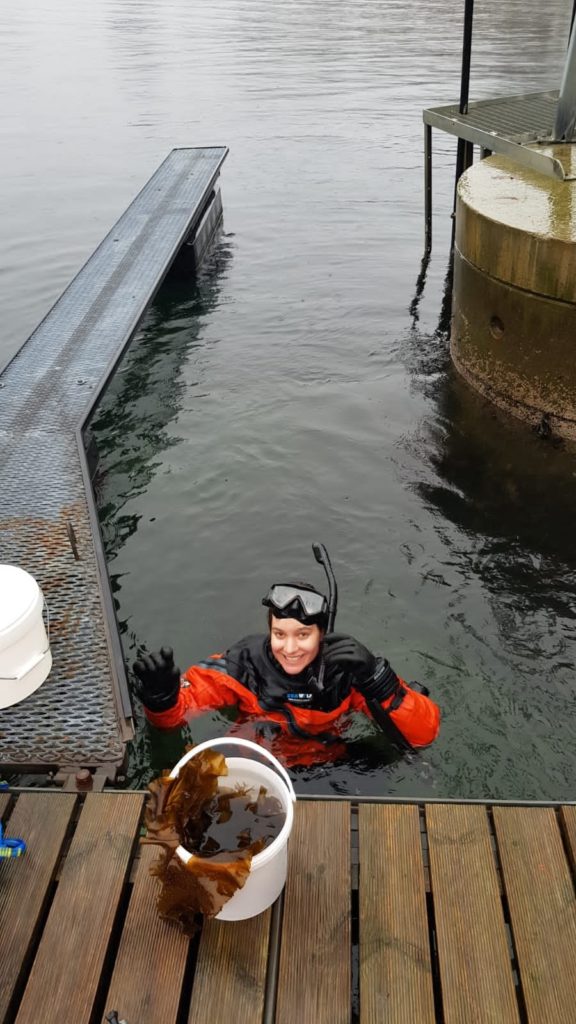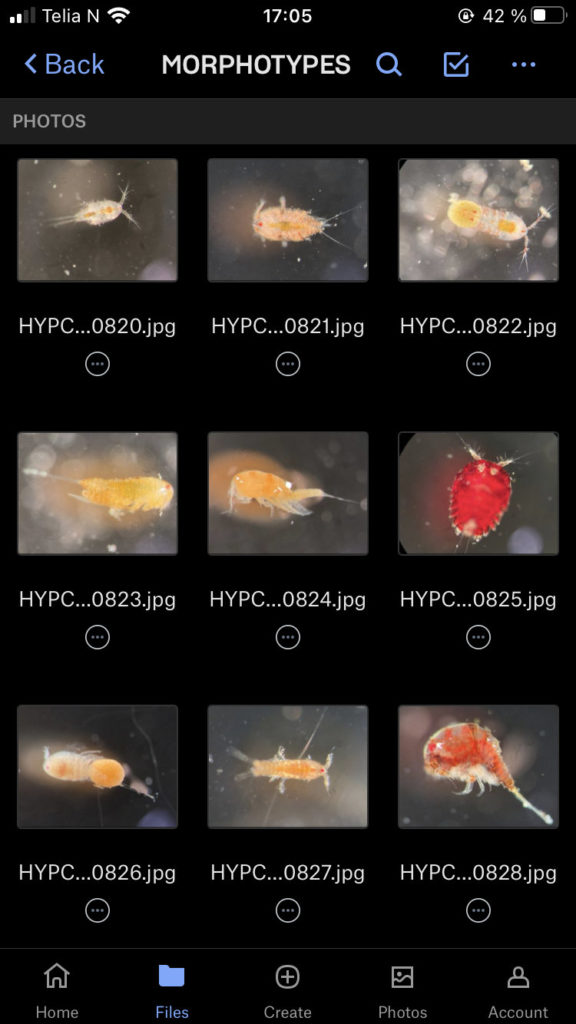
Copepod girls; Cessa Rauch (left) and Francisca Carvalho (right) working on copepods, photo Katrine Kongshavn).
International Woman’s Day was on 8th of March and this coincided this year with the start of a great fieldwork trip with an (almost) girl only expedition team!
Multiple research projects headed towards Espegrend Marine Biological field station in Bergen, to spend the week collecting and sorting specimens. The group consisted of representatives of Hardbunnsfauna (rocky shore invertebrates @hardbunnsfauna), Norchitons (Norwegian chitons @norchitons) and HYPCOP (copepods @planetcopepod).

From ltr; HYPCOP (Cessa Rauch), Norchitons (Nina Mikkelsen), HYPCOP (Francisca Carvalho), Hardbunnsfauna (Katrine Kongshavn). Photo: Jon Kongsrud
The plan for the week was to have access to the research vessel Hans Brattström while also working from the field station on the mainland. This would give us very good opportunities for reaching different sampling habitats. But as always with fieldwork expect the unexpected; unfortunately, after day 1, our R/V Hans Brattström got motor problems, so the planned dredge sampling did not happen. It is good to be creative in those situations because we still managed to get a lot of sampling done by collecting at the piers where the research vessel was docked and in front of the research station itself.
On one of the days (when the sun was out!) we took the small research boat from the field station to explore the habitats of the nearby islands and do some shallow sampling there.
Once we arrived at the island of Søre Egdholmen we needed to dock the small boat without a pier; rest assure this gave interesting scenarios with being half in the water while the rest of the team and the equipment was in the boat.
Once on the island we started to collect lots of material; for copepods, especially shallow benthic ones, that is quite a simple task. The best way is to use a fine meshed net, like a plankton net, and grab a lot of substrate like algae, some sand and small gravel. A lot of species basically stick to the substrate and with the plankton net have no way to escape. By keeping the plankton net with substrate in a bucket with seawater the samples stay fresh the longest. Back to the marine biological station we kept the freshly collected samples in tanks with good saltwater circulation (which the station has access to in the laboratories).
Well let me tell you, we had such nice samples off copepods, not only just the quantity (because with copepods that is never a real issue), but very diverse too.
Every single morphotype was being documented while they were still alive to keep the colors intact.
And then numbered, labeled and fixated in ethanol for the collection.
The goal for HYPCOP this week was to collect and register fresh copepod samples for DNA barcoding.
Their DNA is, as we speak, on their way to the sequencing center in Canada to become part of the Barcode of Life Data System that eventually everyone will have access to. Curious to see what this platform is all about, check out http://www.barcodinglife.org.
Until next time! Don’t forget to follow @planetcopepod on Twitter https://twitter.com/planetcopepod and Instagram https://www.instagram.com/planetcopepod/ or become a member of or Facebook group, see you there! https://www.facebook.com/groups/planetcopepod
-Cessa & Francisca















